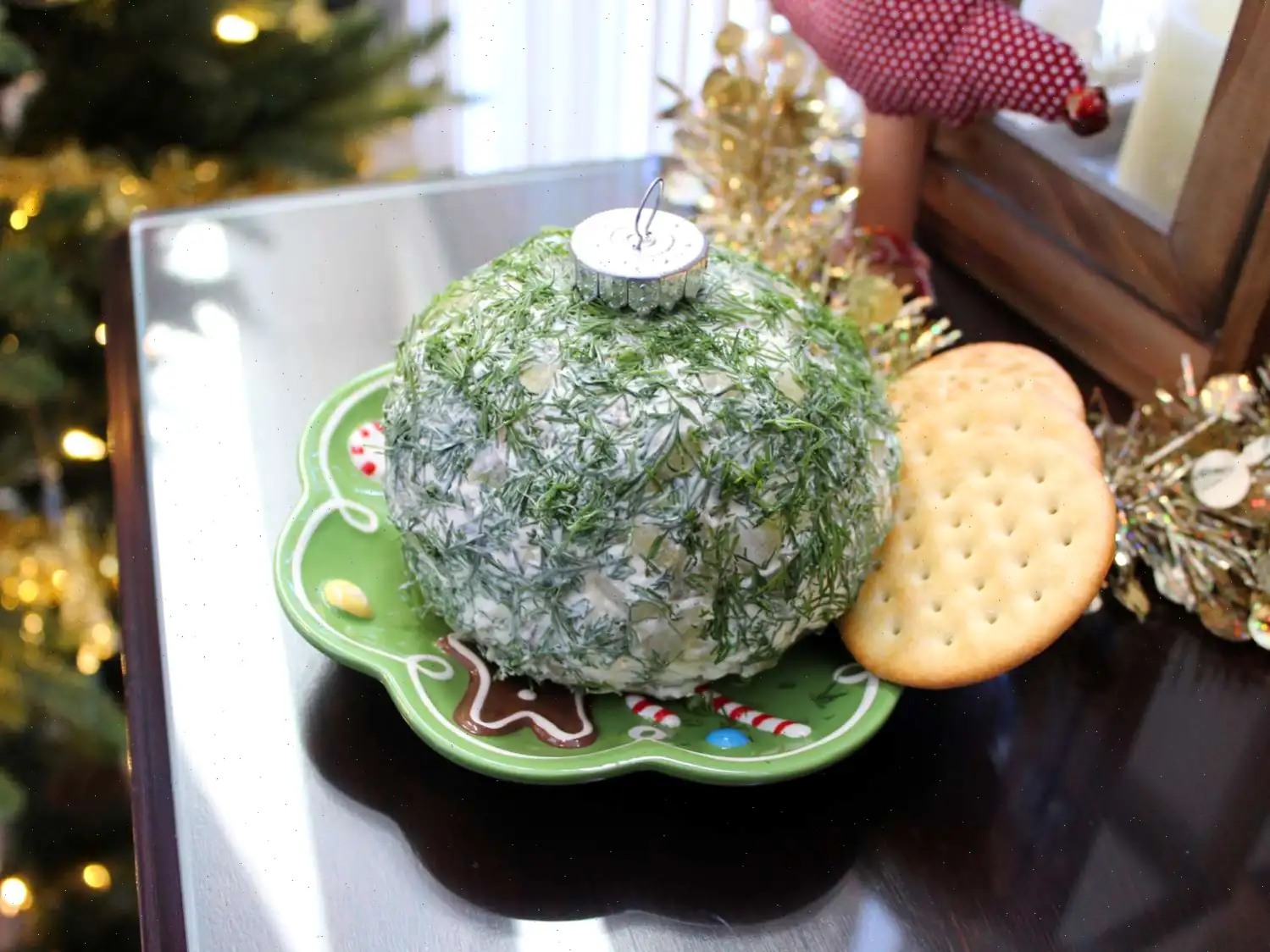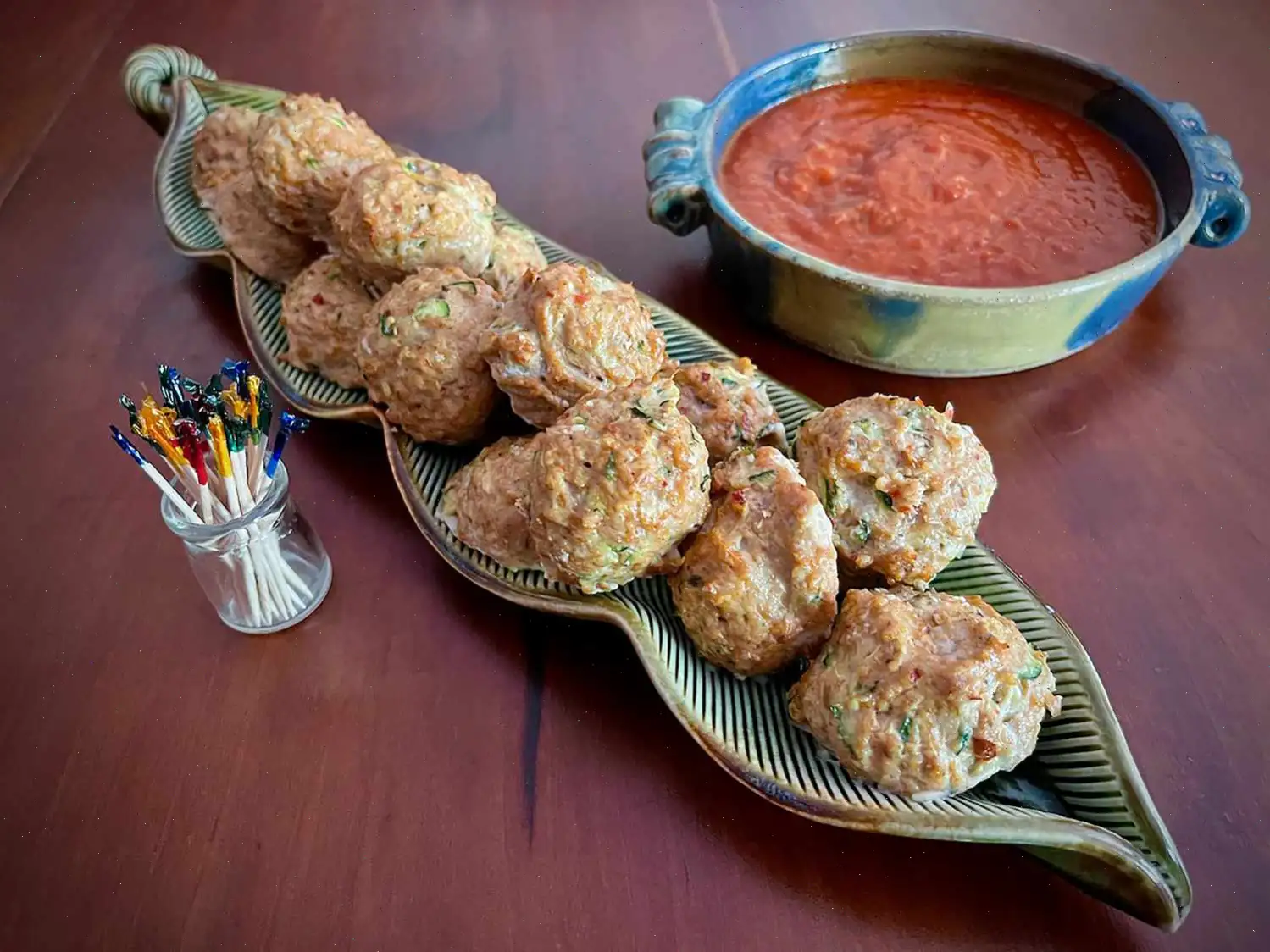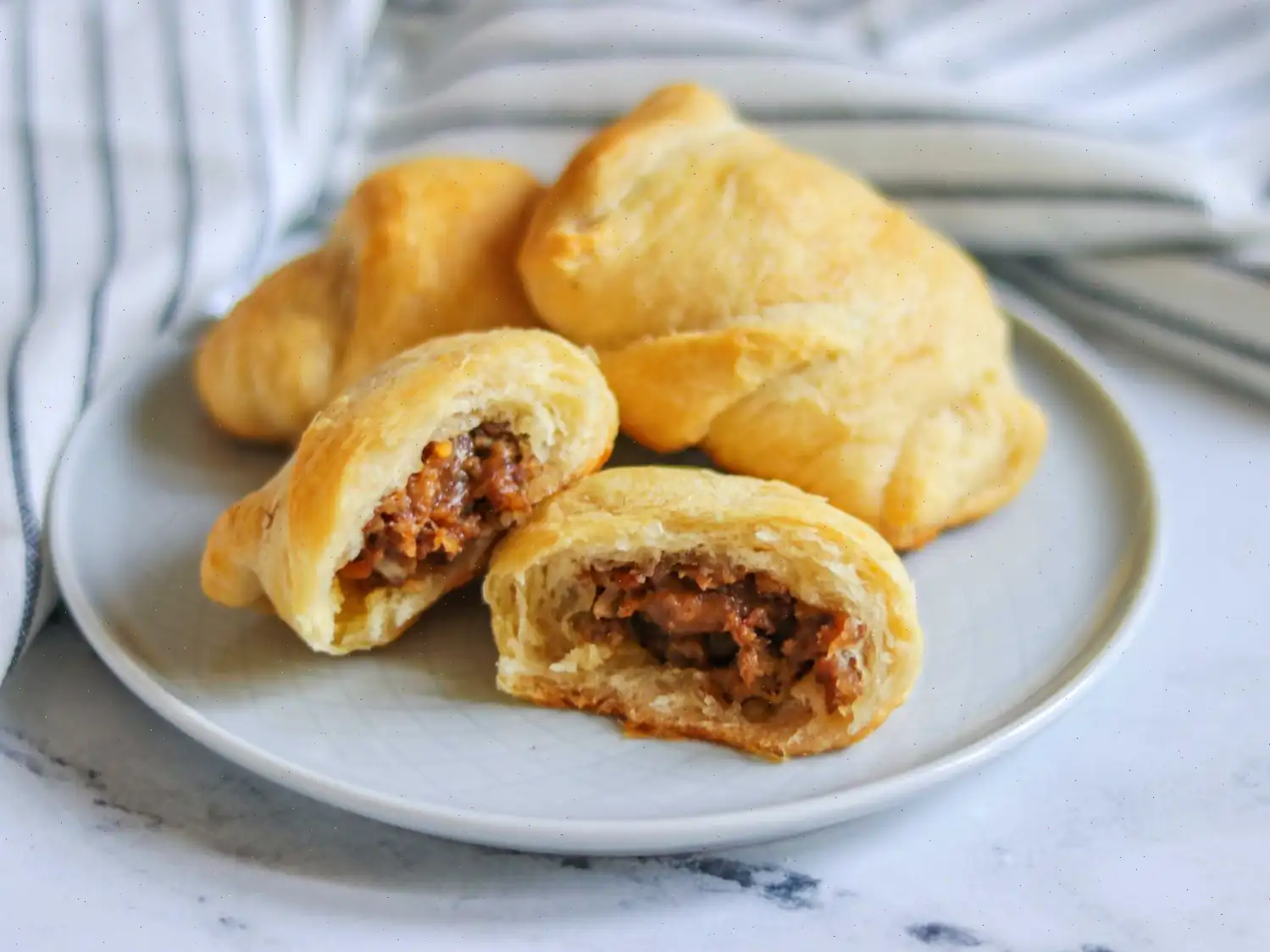
Siopao (Filipino Steamed Dumplings) Recipe
Ingredients
- 1 tablespoon active dry yeast
- 1 cups lukewarm water
- cup white sugar
- 4 cups rice flour, divided
- cup solid vegetable shortening, divided
- 1 teaspoon vegetable oil
- 1 large onion, diced
- 1 clove garlic, chopped (or to taste)
- 1 pounds shredded cooked chicken meat
- cup soy sauce
- 2 teaspoons white sugar
- cup diced green onion
- 1 pinch salt and black pepper to taste
- 1 teaspoon cornstarch (optional)
Directions
- In a medium bowl, dissolve the yeast in lukewarm water. Stir in the sugar and beat in 2 cups of rice flour until a soft sponge forms. Set aside in a warm place to double in size, about 40 minutes.
- Once the sponge has risen, mix in 2 more cups of rice flour and cup of vegetable shortening. Transfer the dough to a greased work surface, and knead in the remaining shortening until the dough is smooth.
- Divide the dough into 15 equal portions. Roll each portion into a ball.
- Heat the vegetable oil in a skillet over medium heat. Add the diced onion and chopped garlic, cooking and stirring for about 5 minutes, until translucent.
- Stir in the shredded chicken, soy sauce, 2 teaspoons of sugar, green onion, salt, and black pepper. If the filling is too watery, add cornstarch to thicken it.
- Lightly grease a work surface. Flatten each dough ball into a 4-inch diameter circle using the heel of your hand.
- Place about 1 tablespoon of the chicken filling into the center of each dough circle. Fold the dough edges together, pinching and twisting to seal the bun.
- Place the filled buns onto waxed paper with the pinched side facing down while you finish assembling the remaining buns.
- Spray a multi-layered bamboo steamer with cooking spray. Set the steamer over a large saucepan filled with water, ensuring the water level is a few inches below the steamer. Bring the water to a boil.
- Working in batches, place 3-4 filled buns in each layer of the steamer, ensuring they don't touch each other or the edge of the steamer. Cover and steam over medium-low heat for about 15 minutes per batch, or until the buns are puffed and the dough is springy.
- Serve the buns warm and enjoy!
Nutrition Facts (per serving)
| Nutrition | Amount | % Daily Value |
|---|---|---|
| Calories | 346 | - |
| Total Fat | 11g | 14% |
| Saturated Fat | 3g | 15% |
| Cholesterol | 34mg | 11% |
| Sodium | 270mg | 12% |
| Total Carbohydrate | 44g | 16% |
| Dietary Fiber | 2g | 6% |
| Total Sugars | 5g | - |
| Protein | 16g | 32% |
| Vitamin C | 1mg | 2% |
| Calcium | 17mg | 1% |
| Iron | 1mg | 5% |
| Potassium | 167mg | 4% |
Servings Per Recipe: 15
* Percent Daily Values are based on a 2,000 calorie diet. Your daily values may be higher or lower depending on your calorie needs.
Siopao is a beloved Filipino snack that draws influences from Chinese cuisine. These steamed dumplings are made with a fluffy, homemade rice flour dough and are typically stuffed with savory fillings like shredded chicken, pork, or even vegetables. Despite its Chinese roots, Siopao has become a quintessential part of Filipino culinary culture, adapted over time to suit local tastes and preferences.
History and Origins
The origins of Siopao can be traced back to Chinese immigrants who arrived in the Philippines, bringing with them traditional dim sum recipes. The name "Siopao" is derived from the Cantonese words "siu" (to roast or grill) and "bao" (bun), although the Filipino version is steamed rather than roasted. Originally, Siopao was introduced as a street food, served in small food carts and consumed as a quick and filling snack. Over the years, it evolved into a favorite comfort food enjoyed by Filipinos of all ages.
Regional Variations
Siopao is enjoyed across the Philippines, but certain regions have their own unique spins on the classic dish. In Metro Manila, Siopao is often filled with pork, chicken, or beef, whereas in provinces like Cebu, the bun may be stuffed with a combination of pork and hard-boiled eggs. Some regional variations even feature unique dipping sauces, such as a vinegar-based sauce or sweet soy sauce. The dough recipe can also vary, with some using a more cake-like texture, while others aim for a soft, fluffy consistency.
Differences from Similar Dishes
While Siopao shares similarities with Chinese baozi (steamed buns), it is distinctly Filipino in flavor and preparation. Unlike baozi, which is typically filled with pork or vegetables in a simple broth, Siopao often incorporates sweeter flavors, such as the addition of sugar in the dough and the use of sweet soy sauce in the filling. Additionally, Siopao is usually served as a snack or appetizer, while baozi may be part of a larger meal.
Where It's Served
Siopao can be found in a variety of places throughout the Philippines. It is commonly sold by street vendors, in food courts, and at small eateries known as "carinderias." It is also a popular item in Filipino fast-food chains like Chowking, where customers can enjoy it as part of a meal. While traditionally served as a snack or appetizer, Siopao is versatile enough to be eaten at any time of the day, from breakfast to dinner.
Interesting Facts
- Siopao is often associated with celebrations and family gatherings in Filipino culture.
- It is not uncommon for people to create "Siopao parties," where the main activity is preparing and steaming various versions of Siopao with different fillings.
- Siopao is sometimes used as a symbol of sharing and togetherness, as it is easy to serve and distribute to groups of people.
- Though traditionally filled with savory ingredients, modern versions of Siopao can also be made with sweet fillings, such as custard or chocolate.
Conclusion
Siopao is more than just a simple snackit's a representation of the rich culinary history and cultural fusion that exists in the Philippines. Its Chinese roots are blended with local Filipino ingredients and tastes, making it a unique and beloved dish in Filipino cuisine. Whether you're enjoying it from a street cart or making it at home, Siopao offers a taste of the Philippines' warm hospitality and creativity in the kitchen.
FAQ about Siopao (Filipino Steamed Dumplings) Recipe
Comments
Sharon Hernandez
10/13/2024 08:30:27 PM
As an experienced cook and baker, I must say that this dough recipe is terrible. If it was intended to use glutinous rice flour, that should have been clearly mentioned. The resulting steamed bun was tough, gritty, and completely lacking in flavor.
Dennis Flores
12/28/2024 10:07:50 AM
I tried making this recipe twice and unfortunately, it didn't work out either time. The first attempt, I followed the recipe closely, only substituting a bamboo steamer with a regular metal one. The buns turned out dense and dry, though the filling was tasty. Hoping that the issue was with the steamer, I purchased the correct one and gave it another shot. The buns were slightly better, but still too dense for my liking. I'll give it two stars mainly for the flavorful filling.







